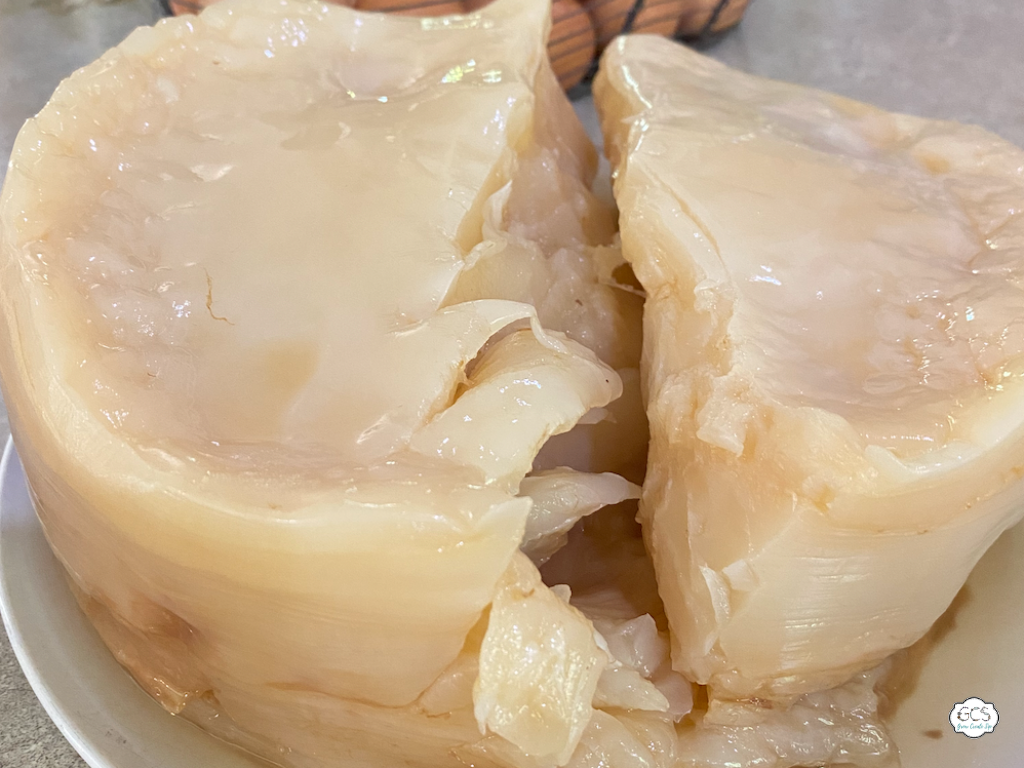A Guide to Making Kombucha SCOBY Fruit Leather
Aug 01, 2023
If you’ve been brewing kombucha for a while, then you probably have SCOBY’s piling up and sometimes it’s hard to know what to do with them all. Should I keep all of them? Do I just throw them away? Well my friends, did you know that SCOBY’s can be utilized beyond brewing?
Let’s put that SCOBY to use in a tasty way! Yup, we are going to eat them! SCOBY fruit leather is a fabulous way to use up extra SCOBY’s and make them taste good. Let’s dive into the details and learn how to unlock the potential of your kombucha SCOBY past just brewing your kombucha.

The Legal Stuff
The contents of this blog are made available via St. Fiacre's Farm LLC through Grow Create Sip and Farmhouse Teas and are for informational purposes only. This blog does not constitute medical advice; the content is not intended to be a substitute for professional medical advice, diagnosis, or treatment. Always seek the advice of a qualified healthcare provider with any questions you may have regarding a medical condition. If you think you may be suffering from any medical condition, you should seek immediate medical attention. You should never delay seeking medical advice disregard medical advice or discontinue medical treatment because of information provided by St. Fiacre's Farm, Farmhouse Teas or Grow Create Sip. Reliance on any information provided by this webinar is solely your own risk. St. Fiacre's Farm LLC (along with Farmhouse Teas and Grow Create Sip) is a participant in the Amazon Services LLC Associates Program, an affiliate program designed to provide a means for our team to earn fees for recommending our favorite products! Along with additional affiliate programs not associated with Amazon. We may earn a small commission, at no additional cost to you, should you purchase an item after clicking one of our links. Thanks for supporting us!
What is a SCOBY?
A SCOBY is the living culture responsible for fermenting sweet tea into kombucha. The word SCOBY, or sometimes called the kombucha mother, is short for "symbiotic culture of bacteria and yeast." The gelatinous, rubbery disc that forms with each new batch of kombucha is a cellulose-based structure that provides a protective environment for the fermentation process and allows the bacteria and yeast to convert the sugar into beneficial acids and carbon dioxide.
Health Benefits of Kombucha
Kombucha provides beneficial "transient" bacteria, meaning they don't colonize, but rather pass through aiding gut health. Regular consumption is needed to sustain the benefits. Other probiotic sources such as sauerkraut, miso, yogurt, and other lacto-fermented veggies provide different strains to support gut/brain health.
Studies suggest these probiotics halt bacterial overgrowth, helping evict any bad bugs from your bod. Get the scoop on said research here!
How Often Do Brewers Have Extra SCOBY’s?
Kombucha brewers often find themselves with too many extra SCOBY’s due to the continuous growth and reproduction of the culture. Each time you make a batch of kombucha, a new SCOBY will grow. As a result, kombucha brewers can easily accumulate surplus of SCOBY’s over time. Instead of discarding these excess SCOBY’s, let's explore some creative ways to make use of them.
Creative Uses for Leftover SCOBY’s
- Feed them to pets: Many pets, such as chickens or fish, enjoy consuming SCOBY’s as a nutritious treat.
- Composting: SCOBY’s are an excellent addition to compost piles, with the bacterial content contributing to the breakdown of organic matter.
- Skin care: Due to their probiotic properties, some people incorporate SCOBY’s into homemade skin care products. Grab a copy of The Big Book of Kombucha if you want to learn more about this.
- Craft projects: SCOBY’s can be dried and used as a natural, biodegradable material for various crafts, such as jewelry or artwork.
- Cooking recipes: Check out The Big Book of Kombucha for more ideas on how to use your SCOBY in cooking.

Using SCOBY’s in Fruit Leather Recipes
Including SCOBY’s in homemade fruit leather recipes adds a unique twist to this popular snack. The SCOBY's texture and tanginess enhance the flavor profile while providing additional probiotic benefits. But why would someone want to use a SCOBY in fruit leather recipes?
Benefits of Using SCOBY’s in Fruit Leather
- Probiotic Boost: SCOBY’s are rich in beneficial bacteria and yeast, which can support gut health when consumed.
- Extended Shelf Life: The fermentation process in kombucha SCOBY’s helps preserve the fruit leather, prolonging its shelf life without the need for preservatives.
- Unique Texture and Flavor: The addition of SCOBY’s creates a slightly chewy texture and imparts a tangy, fermented taste to the fruit leather.
- Control the sugar: By making this at home, you can control the amount and type of sweetener that you include in your kombucha fruit leather.
- Reduce waste: Not only are you reusing your kombucha SCOBY in a recipe that is delicious and beneficial to your health with all those good probiotics but you are reducing packaging and plastic waste by not buying fruit leather at the store. Think of all those plastic fruit leather wrappers that you won’t be throwing away.

SCOBY Fruit Leather Recipe
For this recipe we are basically making a kombucha smoothie that we will then dehydrate. The flavor options are endless and once you see how easy-peasy this is you will be tossing kombucha SCOBY's in your fruit leather all the time. It couldn’t be easier. First let's talk about the equipment that you will need.
Equipment:
- Blender or food processor.
- Baking sheets and parchment paper if using an oven to dehydrate. Consider this reusable parchment paper if you want something that you can wash and use over and over again.
- Silicone tray liners if using an electric dehydrator.
- Electric Dehydrator - we like the Excalibur 9 tray Dehydrator.
Tips & Troubleshooting for Drying Fruit Leather:
- Consistency is Key: Ensure the fruit mixture is evenly spread on the baking sheet to achieve uniform drying.
- Monitor the Texture: Check the fruit leather periodically during the drying process to prevent over-drying or under-drying. Don’t worry if thicker spots seem discolored as the edges and thinner sections dry first. This is normal. Dry until the fruit leather looks and feels the same throughout.
- Adjust Drying Time: The drying time may vary depending on the thickness of the fruit mixture, the specific dehydrator or oven used, and the humidity of your environment.
- Sticks to the parchment paper: If you have trouble removing your fruit leather from the parchment paper, try spritzing your parchment paper with a bit of cooking oil next time.
- Too gummy? Spread the mixture in a thinner layer next time.
- Too brittle? Spread the mixture a little thicker on the parchment paper next time.
- Store Properly: Keep the fruit leather in an airtight container to maintain its freshness and prevent moisture absorption.
- Don’t like the kombucha flavor in your fruit leather? No problem. Soak your SCOBY in cool water for 12-24 hours before making the fruit leather to reduce the kombucha taste
- Is the texture of the fruit leather weird? No. Even though the thought of eating a kombucha SCOBY may seem strange at first, you if blended well, you cannot detect the texture of the SCOBY in the fruit leather in the end.

Get Creative with your Flavors
Don’t stop with just adding fruit. Spice up your kombucha fruit leather by adding interesting spices. Go seasonal with pumpkin and apple in the fall, lavender and strawberry in the spring, strawberry mojito in the summer or even peppermint in the winter. The sky’s the limit to how creative you can get. Here are some more ideas to consider:
Spice and Fruit Combos for Fruit Leather:
- Blackberry Lime Kombucha Fruit Leather
- Basil Strawberry Kombucha Fruit Leather
- Mango Chili Kombucha Fruit Leather
- Cinnamon Pear Kombucha Fruit Leather
- Peach and Clove Kombucha Fruit Leather
Unlimited SCOBY Possibilities
In this post we covered just one way to make things with your SCOBY pelliciles. There are many different things that can be made with them from compost to smoothies to dog treats. If you are wanting to learn more about kombucha and all its ins and outs, then make sure to check out our Free Kombucha Workshop. Before you head out though, I’d love to know, have you ever eaten a SCOBY before? Whether it be in fruit leather form or otherwise? Let me know about your experience in the comments below.
Other Posts you may Find Helpful
- Health Benefits of Kombucha and How to Make Kombucha at Home
- Guide to Bottling and Flavoring Kombucha - Second Ferment
- Your Questions Answered about Kombucha and Sugar
- Herbal Root Beer Kombucha Recipe
- How to Flavor Water Kefir
- Lemon Dill Probiotic Dressing with non-fizzy Kombucha
- Peach Kombucha-Rita














